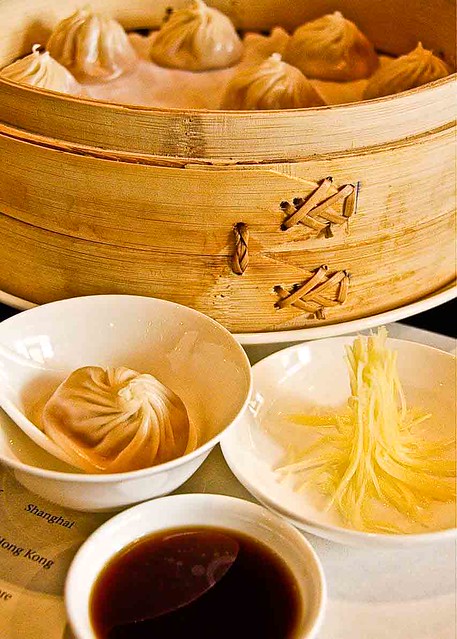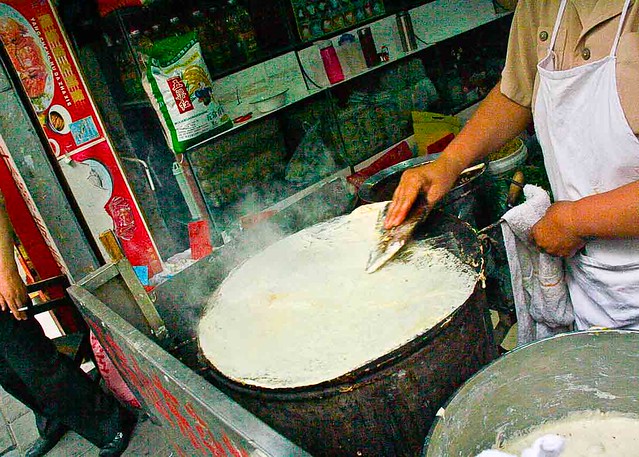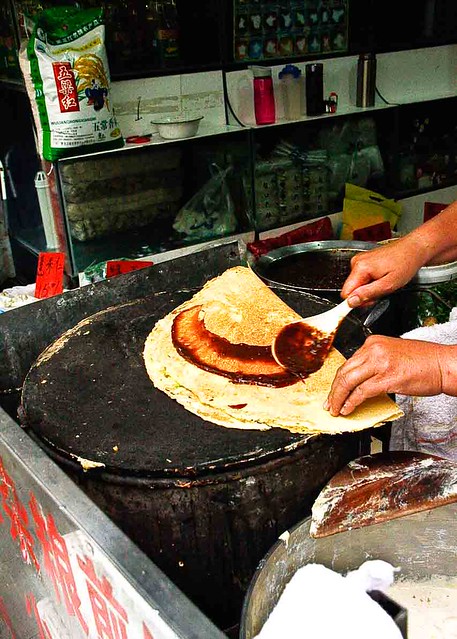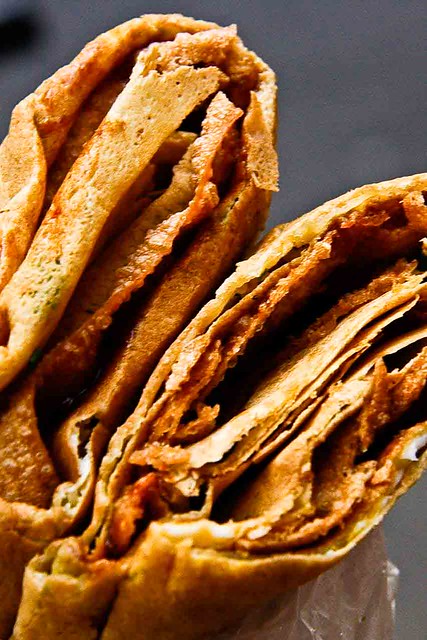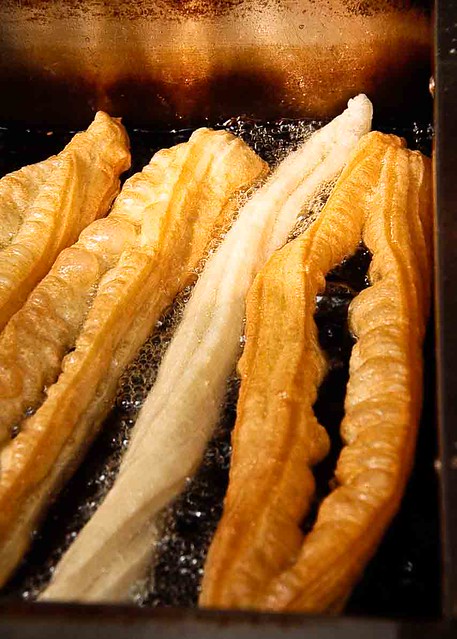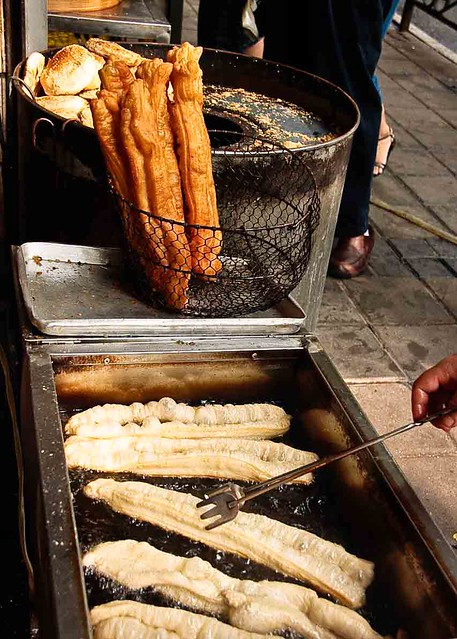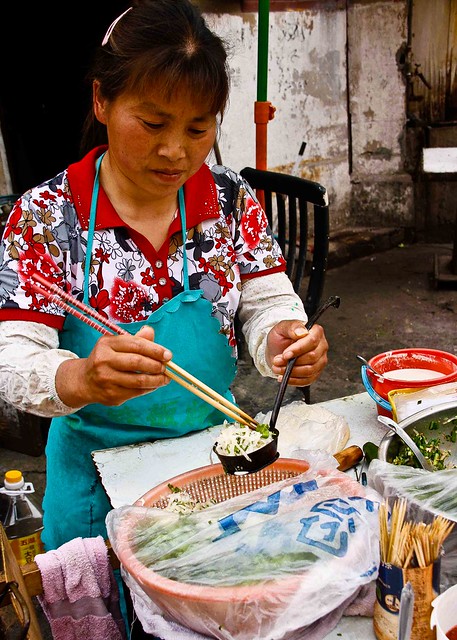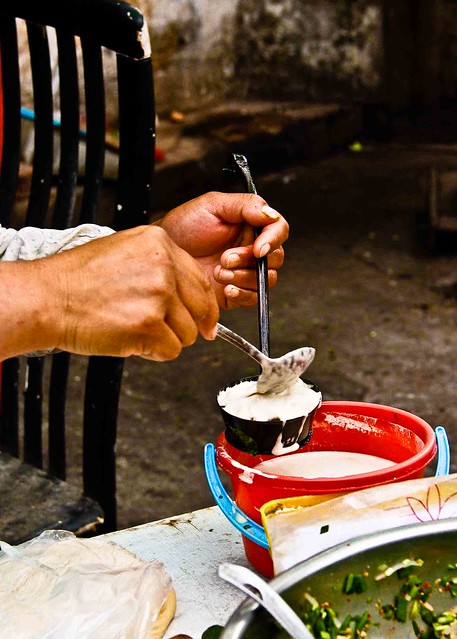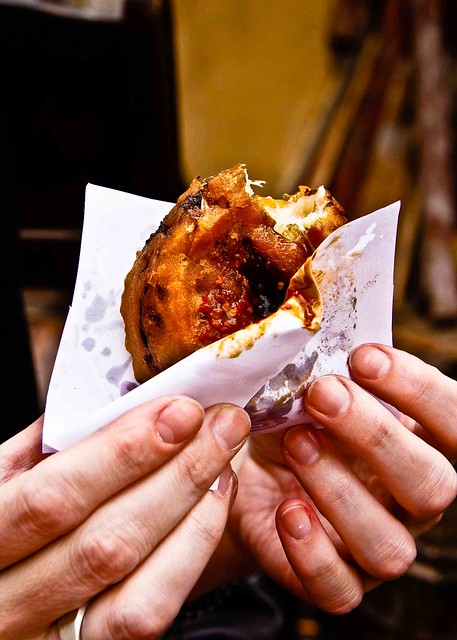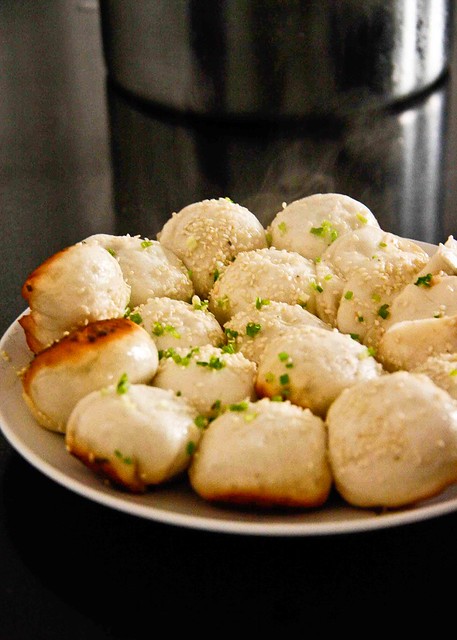Happy Friday everyone!
Today, I have invited Fiona Reilly from
Life on Nanchang Lu to do a guest post here. Fiona is not your average Shanghai expat. In search of a life-less-ordinary, Fiona left Australia and moved to Shanghai in 2009 with her husband and two children, motivated entirely by a sense of adventure.
Travelers to Shanghai sometimes expect to find a vibrant street food scene that’s similar to Singapore. Hence, it is a gem to have Fiona sharing her “Top 5 Unmissable Shanghai Street Foods”, some of which can also be found in Singapore. I am sure that you will love it.

I was delighted when Maureen asked me if I would write a guest post for her, the two of us being similarly obsessed with great food. I live in Shanghai where the wide variety of wonderful street food is one of my greatest daily joys. These street snacks are available on every street in the city, so should you be visiting, look for a queue outside a tiny hole-in-the-wall shopfront, or follow your nose!

1. Xiaolongbao(小笼包)
Xiaolongbao (‘small steamer buns’) are the most classic and beloved Shanghainese dish known. These small, delicate, thin-skinned steamed dumplings, filled with pork and an aromatic and savoury soup, seem to achieve some small culinary miracle, filled as they are with hot liquid.
The first time you try xiǎolóngbāo the soup bursts surprisingly onto your tongue with the first bite, sending hot liquid spurting into your mouth and down your chin. Despite this, you are filled with wonderment that scalding soup can be contained inside a soft dumpling skin. How do they do it? How do they get the soup inside?? The secret to this marvel is that the soup is made from pork jelly, mixed with the meat filling, solid at room temperature but melting into a delicious liquid when cooked.
The real fun of xiǎolóngbāo is, of course, in the eating. Here’s the technique:
·Lift one carefully out of the steamer by its topknot
· Drizzle over some dark, complex-flavoured brown rice vinegar, or dunk the whole thing in a dish of vinegar. Or, if you prefer, eat it plain.
· Nibble a small hole in the top, and allow the steam to escape.
· Carefully, ever so carefully, suck out the boiling hot soup. Slurp noisily, and with enjoyment. Now pop the whole hot steaming bundle into your mouth.
Have another, and another. You’ve got a whole basket to get through! (*see how Fiona makes her own xiaolongbao
here*)
2. Jian Bing(煎饼)
I rarely meet a street food I don’t like, and jiān bǐng are right up there with the best. They are usually eaten as a breakfast food, and you can spot a vendor by the long queue of hungry Shanghai locals waiting to buy one on their way to work. At around 3 yuan it’s a filling and satisfying breakfast that will keep you going until lunchtime.
These amazing crispy egg pancakes are the stuff of legend – there are whole website forums devoted to them, YouTube has dozens of videos of them being cooked, and the poetic longings of expat Chinese on the internet for genuine jian bing are delightful.
My local jian bing vendor starts work well before 6am each day. The jian bing is cooked on a heavy iron griddle – she places a spoonful of the sticky mung-bean flour batter onto the plate, then uses a crepe spreader to make a thin pancake.
While it’s becoming nicely crisp at the edges, she cracks two eggs and spreads these thinly.
Then come a variety of toppings – chopped coriander, diced scallions, finely chopped pickled greens, and occasionally black sesame seeds, according to the customer’s taste.
By now, the underside of the pancake is brown and crispy, and she deftly folds it in half. On the semi-circular pancake she now spreads several sauces – hoisin, red bean sauce, and chilli sauce. It’s the unique alchemy of the sauce combination that makes jian bing so fantastic.
Lastly, she places a crisped rectangle of fried pastry, bread, tofu skin or wonton wrapper inside (this is for the essential component of crunch, contrasting with the soft middle of the crepe) and quickly folds the whole thing in thirds. Now she gives it a quick karate chop to break the fried rectangle, folds it again and slices it into two halves. Pop it into a bag and you have instant breakfast-to-go.
3. You tiao(油条)
Yóu tiáo are nothing more than deep-fried twists of bread, salted and crisp. They are almost exclusively a breakfast food, like jian bing, and are usually eaten with congee (zhōu) or with a bowl of steaming sweetened soy milk.
The vendors get started at around 5am and are still making them way past eleven, for all the late-risers, and whenever I’m out for an early morning walk it’s commonplace to see someone in pyjamas and flip-flops walking back home with a plastic bag filled with three or four you tiao poking out, for the family breakfast.
The yóu tiáo are made from yeast dough, rolled flat, and cut into short narrow strips. Each strip is placed on top of a second, then pressed lightly together lengthways to make the join that can later be pulled apart after cooking.
The baker then deftly twists and stretches them until they are the right length, and lays them side by side in the deep fryer until they are golden brown and nicely crisp. Just drop your money into the ‘cash register’ on the counter (one yuan each) and your take-away breakfast is good to go.
Yóu tiáo are fantastic when pulled fresh from the deep-fryer. The foot-long bread can be separated into two side-by-side pieces, with a crisp, almost waffle-like exterior, and a light and chewy interior. Like all fried things, the flavour depends entirely on the quality of oil being used and the freshness. Best consumed within ten minutes of cooking, otherwise they become very tough and rubbery.
4. You dunzi(油墩子)
Shanghai street foods don’t get much better than these crispy, oily fried white radish cakes – yóu dūnzì. Take a bite through the crunchy outside, and steam escapes from the soft radish and batter mixture inside, studded with tiny pieces of green scallion. The sauces, a salty chili paste, and a sweeter bean paste, transform a radish fritter into something quite sublime.
As for the meaning of yóu dūnzì, it translates either as oily clusters, or oily (wood or stone) blocks. A cài dūn zì is a round chopping block, so the shape and colour of the fritters probably gives rise to the name.
Like most street foods, they’re pretty simple to make as long as you have the right ingredients and equipment. Here, the essential item is a deep, long handled spoon, with the end shaped like a patty tin. A simple flour and water batter goes in first, followed by a big spoonful of shredded white radish mixed with chopped scallions, coriander and some salt, and then topped up with enough batter to fill the spoon to the brim. Then the whole spoon is lowered carefully into bubbling hot oil and left until the radish cake rises from the spoon and is released.
Once it’s nicely browned on both sides it’s placed on the drip rack above the wok to cool for a moment (along with some other fried snacks) and then has a hole poked unceremoniously in its top with the blunt end of a chopstick. Into this go the magic extras – salted chili sauce for saltiness and bite, and bean paste for sweetness and depth. Aaah.
5. Shengjian bao(生煎包)
The bolder, breadier cousin of the dainty xiaolongbao, shēngjiān bāo are every bit as good, just different. Their savoury, soup and pork-filled inside is exactly the same, but this is where the similarity ends. For starters, shengjian bao are made with a leavened bread dough, and once filled left to rise so they assume quite hearty proportions.
They are then fried, sealed side down, in a heavy pan or griddle until the bottom is deeply golden and crispy, then the cook throws a cup of water into the pan releasing an enormous cloud of steam. She clamps a lid down tight on the pan, trapping the heat so the buns continue to steam.
The result – crisp and crunchy on the base, pillowy soft on the top, and a luscious juicy piping hot pork and soup filling. Now tell me that’s not the most delicious thing you ever heard of?
___________________________________________________________________________
About the Author
Fiona has always been a foodie. When she arrived in Shanghai, she started Life on Nanchang Lu to document the people and food around her. Before this, she knew little about language and the food. Her initial attempts at Chinese cooking were disastrous, but she became obsessed with learning about it. She learnt Chinese by hard; hold meaningful conversations with the locals in Chinese; explores the local markets and street food stalls and restaurants with great passion; and takes very lovely photos.
If you are planning a trip to Shanghai, don’t miss her post on Guilin: Paradise on Earth, The Nakhi of Lijiang: Of The Cosmos And The Stars, Langde: The Protection of Silver and Cooking Chinese in the Countryside: Yangshuo Cooking School. Do visit her website: www.lifeonnanchanglu.com to read more!


